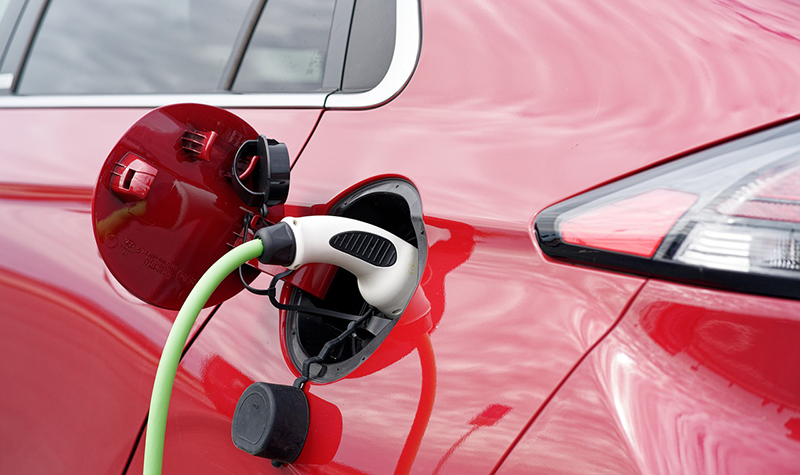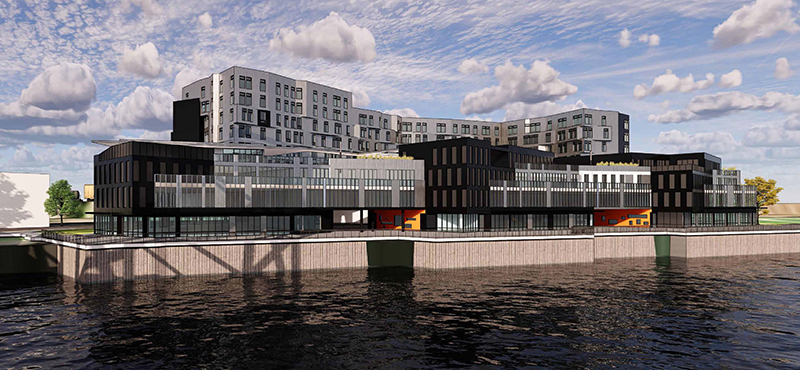Commercial and Residential Building Projects Integrate EV Charging Stations

As new commercial and residential buildings go up in the 2020s, more and more of them will integrate electric vehicle charging stations into their designs. The motivations for this trend include state and local code requirements in places such as California, Washington, and various cities. They also include the building owners’ desire to provide this amenity to the workers, patrons, and residents of their facilities. And $7.5 billion in Infrastructure Bill funding earmarked for chargers is projected to motivate states and communities to help build a network of up to 500,000 chargers across the United States.
Auto manufacturers are just reaching the on ramp toward production of EVs for the masses, so designing a building today requires owners to at least consider accommodating the next generation’s vehicles of choice – EVs. Costs vary widely, depending on charger types, but the average for the most common type is about $6,000 installed – and even less for installations at new buildings.
Energy Codes Driving Some Early Installations
Let’s look first at the energy codes driving EV charger installations in the West and in cities around the nation. It’s helpful to understand that these codes refer to charging infrastructure as “electrical vehicle supply equipment (EVSE),” and that the regulations trigger charger integration at one of three levels:
- Capacity: Requiring that electrical capacity be designed and built into a facility that will support the future installation of a certain number of chargers in or around the building. This percentage is 20% in the State of Washington energy code.
- Provision: Mandating that a certain percentage of parking spaces be devoted to and designed for future installation of chargers. This percentage is 10% in Washington. The California Green Building Code requires 6% of total parking space provisions for non-residential new construction and 10% for residential. The fine print varies, but this requirement may include installation of an electrical panel for the chargers, plus wiring between the panel and the electrical service entering the new facility.
- Installation: Typically, actually installing chargers is left up to the owner, and installation counts toward compliance with the provision requirement.
Beyond California and Washington, some cities are establishing ordinances requiring EV chargers in new buildings, such as a St. Paul, Minnesota, legal provision that calls for EV charging provisions at commercial buildings.
Three Charger Types
Charging currently comes in three levels:
- Level 1: Plugging into a standard 120-volt outlet like the one you plug your toaster into requires at least eight hours to charge a typical EV.
- Level 2: This common charging option uses a 208-240-volt circuit, and the charger can be 40-amp, 48-amp, or 100-amp. Homeowners commonly have a 40-amp charger installed and are sure of a full charge overnight. Typical charge time is four hours. These are also the most common type of chargers designed by applicable code into offices, retail settings, and multifamily residential developments.
- Level 3: Using a 400-900-volt DC system, these expensive chargers include Tesla Superchargers and a variety of other chargers using a variety of proprietary plug types. Tesla states its Superchargers deliver up to 200 miles of range in 15 minutes.
How Much Does it Cost to Install an EV Charger?
A quick look around the Internet yields cost estimates (including equipment and installation) of $3,000 to $10,000 per Level 2 charger. Property Manager Insider puts the average cost at $6,000. Charged Future notes an average of $6,888 for adding a charger to an existing site, while the average is $4,638 at a new building, pointing out the advantages of designing this feature into a new facility rather than having to saw through concrete, etc., to retrofit an existing parking lot/garage. Maintenance averages about $300 per year.
Design Considerations
Electrical engineers are mostly concerned with the overall scale of charging facilities in a new building and what types of equipment are demanded, depending on the number of chargers:
- Adding one or two Level 2 chargers doesn’t require extra infrastructure.
- Adding 10 Level 2 chargers demands extra distribution equipment.
- Adding 20 chargers requires increasing the size of electrical service.
- Adding 50 chargers means designing and installing separate service just for the chargers.
One project we’re working on now – the Kirkland Renaissance Boardwalk project in Vancouver, Washington – includes below-grade parking in a stacker system, and plans call for an unusually high percentage of EV parking per requirements in the development agreement with the City of Vancouver – a minimum of 100 EVSE provisions out of 386 spaces. How many chargers will actually be installed is not yet known.

The scale of chargers an owner chooses to design into a facility boils down to their anticipation of demand versus the significant investment that chargers represent.
Ideas for maximizing the utilization of installed EV chargers include using a smart meter to charge higher rates during high-demand hours to discourage users from “squatting” on a charger for longer than necessary. But this obviously reduces the user’s comfort level if they need to worry about taking time out of their day to deal with reparking their vehicle. A St. Paul “dwell fee” of $10 per hour applies to users of city-owned charging stations who remain plugged in beyond posted time limits.
Powering chargers via a solar array is another creative concept that’s being considered. This is certainly possible, but it would require a large and expensive solar array to accomplish.
For more information regarding integrating EV charging stations into commercial and residential building projects, contact the experts in our MEP Division.

Post a comment: